Section 1.1 Section 1.2 Section 1.3 - The Student Room
Section 1.1 Section 1.2 Section 1.3 - The Student Room
Section 1.1 Section 1.2 Section 1.3 - The Student Room
Create successful ePaper yourself
Turn your PDF publications into a flip-book with our unique Google optimized e-Paper software.
SECTION 2<br />
<strong>Section</strong> 2.2<br />
1 a 238 234<br />
94Pu Æ<br />
92 U + 4 2 He<br />
b 221 217<br />
87Fr Æ<br />
85 At + 4 2 He<br />
c 230 226<br />
90Th Æ<br />
88 Ra + 4 2 He<br />
2 a<br />
38 90 90<br />
Sr Æ<br />
39 Y + –1 0e<br />
b 131<br />
53 I Æ 131<br />
54 Xe + –1 0e<br />
c 231 231<br />
90Th Æ<br />
91 Pa + –1 0e<br />
3 a<br />
3 7Li + 1 1 p Æ 24 2 He<br />
b 14 7 N + 0 1n Æ 14 6 C + 1 1 p<br />
<strong>Section</strong> 2.3<br />
1 No. Isotopes have the same number of protons and the<br />
same number of electrons.<br />
2<br />
core<br />
nucleus plus<br />
filled shell 1<br />
3 a 2.1 b 2.8.5 c 2.8.8.2<br />
4 Electronic shell configuration Group Period<br />
– 3 2<br />
– 6 3<br />
2.4 – –<br />
2.8.4 – –<br />
– 1 2<br />
– 1 3<br />
– 1 4<br />
5 Elements A, C and E are in the same group.<br />
<strong>Section</strong> 2.4<br />
outer shell<br />
with seven electrons<br />
1 s block: metals<br />
p block: mixture of metals and non-metals<br />
d block: metals<br />
f block: metals<br />
2 a <strong>The</strong> electron is in the first electron shell.<br />
b <strong>The</strong> electron is in an s type orbital.<br />
c <strong>The</strong>re are two electrons in this orbital.<br />
3 a s block b p block<br />
c p block<br />
d f block<br />
e d block<br />
f p block<br />
g f block<br />
h s block<br />
c 14 7 N + 2 4He Æ 17 8 O + 1 1 p<br />
d<br />
13 27Al<br />
+ 2 4 30<br />
He Æ<br />
15 P + 0 1n<br />
4 226<br />
88<br />
222 218<br />
Ra Æ<br />
86Rn Æ<br />
a a 84 a<br />
Po Æ<br />
214<br />
82 Pb<br />
5 232<br />
90 Th – 64 2He – 4–1 0 e Æ 208<br />
82 Pb<br />
6 a 5g b 0.625 g c 4.5 ¥ 10 –4 s d 0.039 g<br />
7 b Approx. 4.3 g<br />
c Approx. 185 days<br />
6 a X is in Group 1.<br />
b Y is in Group 0.<br />
Group 1 elements have a single electron in their outer<br />
shell, which they lose readily. Noble gases in Group 0<br />
have 2 or 8 electrons in their outer shell and it is<br />
difficult to remove one of these electrons.<br />
7 a lst ionisation Ca(g) Æ Ca + (g) + e –<br />
2nd ionisation Ca + (g) Æ Ca 2+ (g) + e –<br />
3rd ionisation Ca 2+ (g) Æ Ca 3+ (g) + e –<br />
b Once an electron has been removed the remaining<br />
electrons are held more tightly. Hence it is more<br />
difficult to remove a second electron.<br />
c Second ionisation enthalpy involves removal of an<br />
electron from shell 4 but third involves removal of an<br />
electron from shell 3 which is closer to the nucleus.<br />
8 <strong>The</strong> second ionisation enthalpy for sodium is high<br />
because removing a second electron involves removing<br />
an electron from the full second shell. This requires<br />
much more energy than removing the second electron<br />
from the third shell of magnesium which is further from<br />
the nucleus.<br />
4 Z = 16. <strong>The</strong> element is sulphur.<br />
5 a Chlorine b Potassium<br />
c Titanium d Tin<br />
6 a 1s 2 2s 2 2p 1<br />
b 1s 2 2s 2 2p 6 3s 2 3p 3<br />
c 1s 2 2s 2 2p 6 3s 2 3p 5<br />
d 1s 2 2s 2 2p 6 3s 2 3p 6 4s 2<br />
e 1s 2 2s 2 2p 6 3s 2 3p 6 3d 6 4s 2<br />
<strong>Section</strong> 3.1<br />
1 a, c, e 2.8.8<br />
3 a<br />
b, d 2.8<br />
f 2.8.14<br />
g 2.8.13<br />
b<br />
h 2.8.17<br />
2 K + , Ca 2+ , (Sc 3+ ), Cl – , S 2– , P 3–<br />
Li<br />
K<br />
+ –<br />
X<br />
H<br />
+<br />
XX<br />
F<br />
X<br />
XX<br />
X<br />
X<br />
–<br />
164


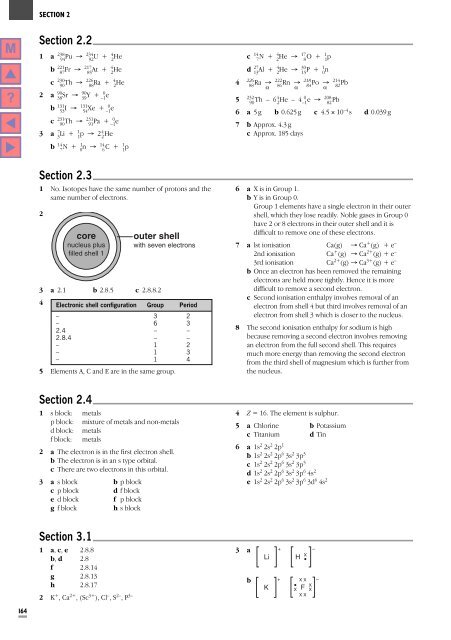
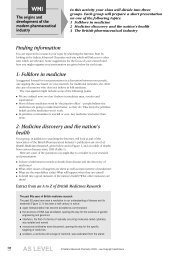
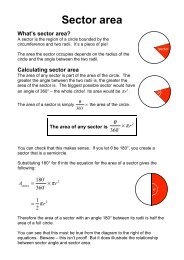
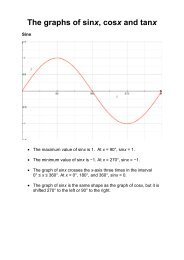
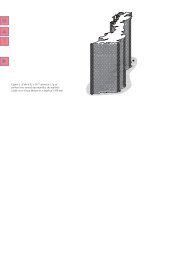

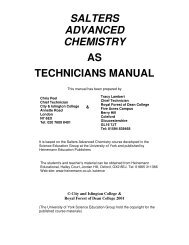


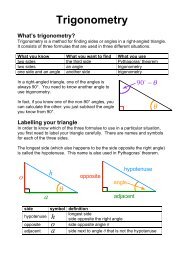
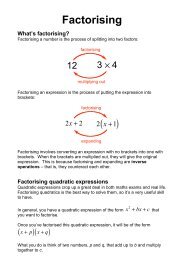
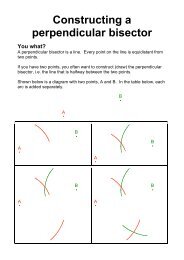

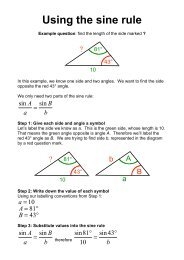
![ISI Web of Knowledge [v.4.10] - All Databases Results - Benjamin-Mills](https://img.yumpu.com/39253071/1/184x260/isi-web-of-knowledge-v410-all-databases-results-benjamin-mills.jpg?quality=85)